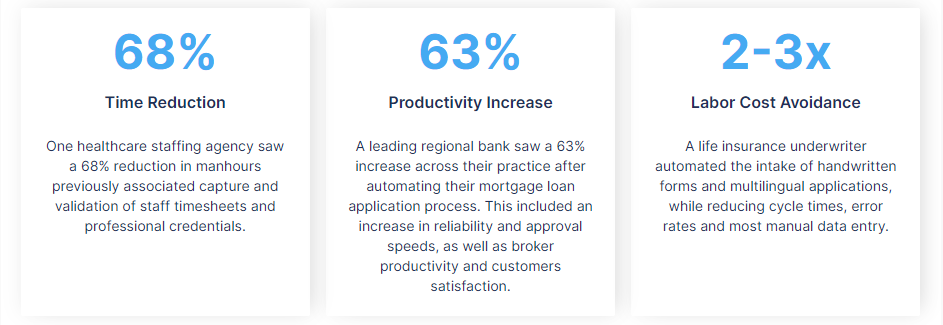Low-Code Platforms Deliver Greater Operational Efficiency
Low-Code Development: The Next Generation Content Application Enabler Now more than ever it’s important to ensure your content-rich processes are...

The concept of document automation is using a machine instead of a human to identify the document type and capture core business information from the document. Documents today do not typically mean paper. Email, web portals, and other communication mechanisms mean the documents seldom get to a physical form. This conversion from unstructured data into structured data is what we know as document automation.
Document Automation consists of three steps:
Automated classification sorts documents based on type. Typical examples include invoices, claims, or loan documents which are separated and identified by document type.
The usual set of classification techniques includes:
Classification may use any of these techniques or be combined to improve the probability of a correct result. There are rules of thumb, but there is not any substitute for spending the time to develop a strong understanding of the content set and having the product experience necessary to build out an effective solution for extraction.
Machine extraction replaces manual data entry processes by pulling fields of information from the document and converting it to structured data. The system will “locate” the data elements needed for processing based on the document type identified in classification. It does that in a variety of ways:
There is a level of confidence the machine uses when extracting, then it goes through the validation process — making sure extracted data makes sense and is accurate.
When information is extracted, the machine determines whether the values are valid in the context of the application system receiving the data. The simplest kind of validation is checking the extracted value’s format. If a customer number in our enterprise is numeric, seven digits long, with a dash between the second and third characters, and the extracted data matches those simple rules, the extraction most likely worked.

Validation does not just involve the machine; validation is all about checking the work done by the machine or done by the human and is a core part of all document automation applications. A confidence value lower than a set threshold triggers review by a human to either confirm the correctness of the machine or make a change if the machine was incorrect. Likewise, any failure of a rule-based validation also requires human intervention.
In our 25 years of experience, Genus has seen company after company benefit from implementing document automation. Whether you’re in healthcare, finance, banking, insurance, or any other industry, we can help you improve productivity, save time on tasks, and decrease costs.


Low-Code Development: The Next Generation Content Application Enabler Now more than ever it’s important to ensure your content-rich processes are...

The Culture of Low-Code I suspect there is a bit of “maker” in all of us. I, for one, do like to tinker and recently wrapped up construction of a...

Traditionally, the need for DAM has been rooted in the idea that your content needed to be: